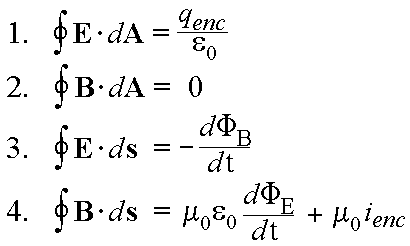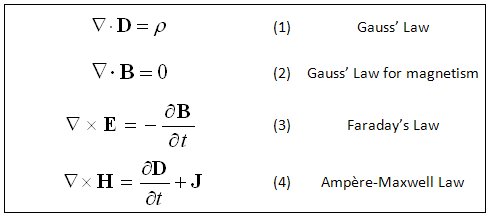Maxwell's Electromagnetic Theory: Difference between revisions
Megsales95 (talk | contribs) No edit summary |
Gnewville3 (talk | contribs) No edit summary |
||
| Line 1: | Line 1: | ||
Written by Megan Sales. | Written by Megan Sales. '''CLAIMED BY GRACE NEWVILLE FALL 2016''' | ||
A general description of "A Dynamical Theory of the Electromagnetic Field," proposed by Maxwell in 1865. | A general description of "A Dynamical Theory of the Electromagnetic Field," proposed by Maxwell in 1865. | ||
Revision as of 14:31, 31 October 2016
Written by Megan Sales. CLAIMED BY GRACE NEWVILLE FALL 2016
A general description of "A Dynamical Theory of the Electromagnetic Field," proposed by Maxwell in 1865.
The Main Idea
Maxwell's theory proposed that electric and magnetic fields move as waves at the speed of light. This was the first time electricity, magnetism, and light had been related in such a way. The theory is also the source of the heavily used Maxwell Equations.
A Mathematical Model
Maxwell Equations:
A Computational Model
Maxwell's equations can be used to model a multitude of scenarios. Check out this resource for several interesting demonstrations.
Examples
Gauss's Law Example
https://www.youtube.com/watch?v=c0S7U6uldsc
Derivation
Lengthy, but very informative:
https://www.youtube.com/watch?v=AWI70HXrbG0
Connectedness
I first saw Maxwell's Equations in my thermodynamics class last semester. That is what prompted me to explore the theory behind them, as I had only used them in a practical application. That being said, this video shows the derivation of the equations for thermodynamics, something I use as a chemical engineer.
Maxwell's equations also have a direct industrial application. They are used in magnetic machines and to accurately predict electrical machine performance. They also led to the development of the Maxwell stress tensor.
History
When James Clerk Maxwell came out with his paper, "A dynamical theory of the electromagnetic field," in 1865, it was found hard to understand and widely ignored. Even so, it is one of the most important pieces of theory in our history. He himself downplayed the importance of his theory, putting more emphasis on Kelvin's vortex theory during his own address. Furthermore, it was hard to grasp the concept of intangible fields. Scientists, including Maxwell, tried to picture fields as tangible structures, but to use these mechanical models with the Maxwell equations, they had to be exceedingly complicated. Later, other physicists such as Hertz, Lorentz, and Einstein clarified his theory.
When the paper first was written, it was read to the Royal Society. It was next read and reviewed by many other notable physicists, all prior to its publication. Even once it was published, very few copies were produced.
There were originally 20 equations. These were reduced by Heaviside into 8 equations, and these later became the four equations we are familiar with.
See also
Further reading
The theory itself:
http://www.ymambrini.com/My_World/History_files/maxwell_emf_1865.pdf
References
http://www.damtp.cam.ac.uk/user/tong/em/dyson.pdf
http://rsta.royalsocietypublishing.org/content/366/1871/1807

